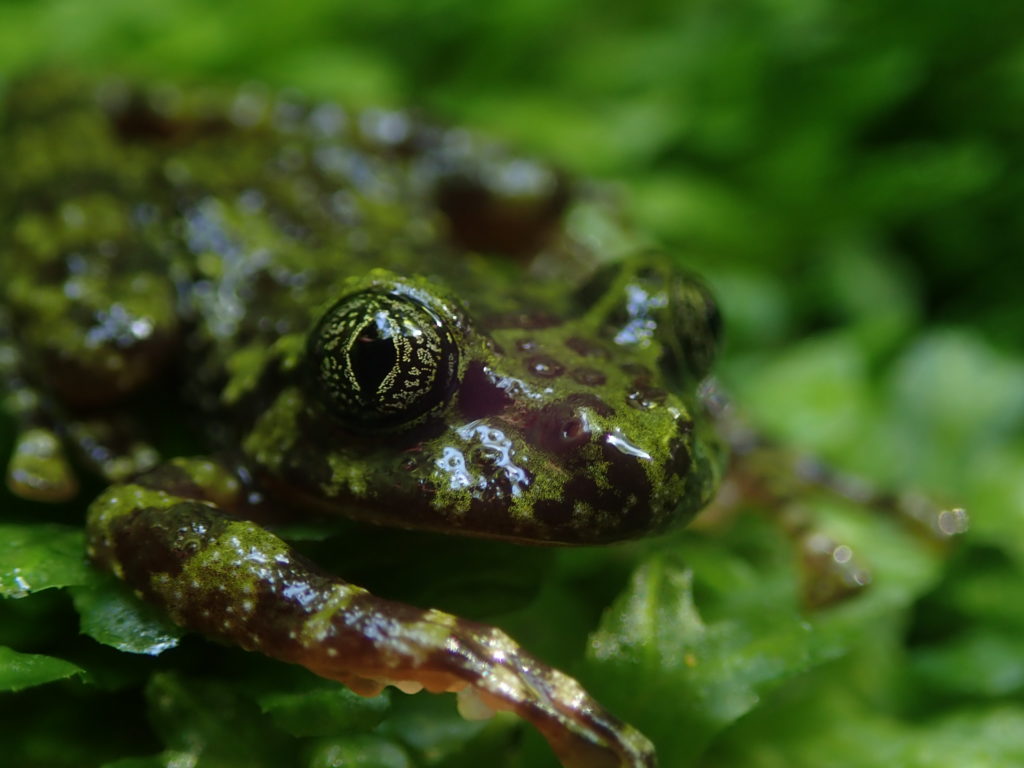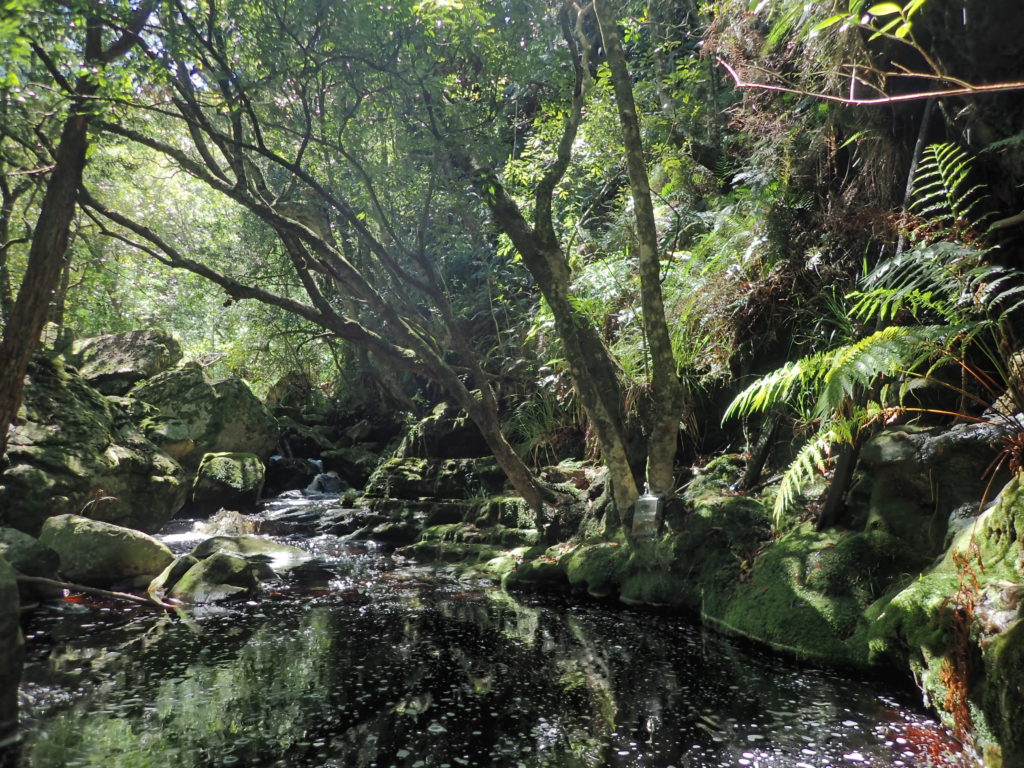THE TABLE MOUNTAIN FRESHWATER ECOSYSTEMS PROJECT – ONE YEAR ON

Joshua Weeber, Table Mountain Project Intern. EWT Threatened Amphibian Programme
The Table Mountain Freshwater Ecosystems Project has had an exciting first year, setting a strong foundation of data collection and crucial partnerships that will allow the project to continue to evolve in 2020. It has been a year filled with new discoveries, long but exciting days in the field, slightly longer days in the office and many meetings, presentations and interesting discussions in between.
While the majority of the work has centred around the iconic and Critically Endangered Table Mountain Ghost Frog, there has also been considerable work done on the threatened freshwater ecosystem that supports this species (and many others). The project began with a flurry of activity in January 2019, a race against the onset of the Cape Town winter to install permanent temperature loggers in nine streams, design and implement detailed habitat assessments, and identify key sites to monitor Table Mountain Ghost Frog tadpole occupancy, movement and habitat preference. All before the winter storms arrived to transform these tranquil headwater streams into gushing, unpredictable torrents. For the tadpoles, this dynamic seasonal change is something they are perfectly suited to deal with, utilising their elongate sucker mouths to anchor beneath boulders and cobbles during periods of strong flow. The project is beginning to reveal just how crucial this sub-cobble habitat is for these sensitive amphibians; areas of the stream that are impacted by sediments and silt or choked by invasive Australian Blackwood rarely hold ghost frog tadpoles. In contrast, pools and riffles with deep cobbled sections, uneroded banks and indigenous riparian vegetation hold a surprising abundance of these unique animals.

Unfortunately, many of the threats evident within this freshwater ecosystem directly impact tadpole habitat. Manipulation of flow from dams and weirs, invasive vegetation and erosion as a result of path use negatively affect stream health, changing the habitat structure of these sensitive streams. Detailed surveys over the last year have produced maps that identify the location and extent of each threat and together with extensive occupancy and habitat data are enabling the team, for the first time, to quantify the impacts of these threats to ghost frog habitat. This is a crucial step towards identifying and implementing conservation interventions and feeding this into park management decisions. The first year of the project was brought to an end with a stakeholder workshop to discuss the Table Mountain Ghost Frog Action Plan, a document that aims to galvanize research, management and awareness efforts together with all project partners to achieve a future with healthy, stable freshwater ecosystems.
A key management intervention – the removal of large clumps of Australian Blackwood in Disa Gorge – is scheduled to begin in April 2020. The team are also developing a ‘Citizen Assist’ follow up plan to provide support to Working on Fire during future clearing follow ups. Discussions are also ongoing with SANParks to address erosion issues in key habitat areas, potentially through the installations of boardwalks.

Given the novel nature of this research (almost nothing is known about the ghost frog’s biology or life history), a number of new and interesting findings have emerged during the first year. It was established that tadpoles have no upper elevation limit, occurring right at the top of the mountain (850 m above sea level) in suitable habitat. Their lower elevation limit appears to be a function of slope with tadpoles disappearing from pools when streams begin to flatten out slightly at around 250 m above sea level. The distribution of the species has also been extended to the southwest by roughly 10% with a citizen observation. This amazing record sparked a search of the kloof and confirmed the presence of ghost frogs in several pools, bringing the total number of streams in which the species occurs to eight!

OLYMPUS DIGITAL CAMERA
The first ever record of Table Mountain Ghost Frog eggs was made when 47 white-centred eggs were found in a still, shallow pond in late December. The eggs developed into tiny tadpoles just before an out of season storm swept them away. Insights into where these tadpoles spend their time and how long they remain tadpoles for were also made this past year. A pilot Visible Implant Elastomer (VIE) study showed that, in one section of a stream, tadpoles did not move between pools over several weeks of monitoring. This method also confirmed the widely accepted view that ghost frog tadpoles take several months to reach metamorphosis – a tagged tadpole was discovered in the same pool 10 months after the initial tagging event. Although the team has not as yet managed to record in situ calls, they have made amazing progress in identifying appropriate adult frog habitat, locating over 20 fully grown Table Mountain Ghost Frogs in the first year. This relatively high detection rate (for such a rare and elusive species) provides exciting new research opportunities such as individual identification through dorsal patterning and insights into adult range size and life span.
2020 has already got off to a frantic start with the summer fieldwork season commencing in February. It will be exciting to assess the presence of tadpoles, location of adult frogs and the integrity of the stream environment in relation to last year’s data. May 2020 prove to be another solid step towards ensuring the survival of this unique frog, and more importantly the freshwater ecosystem it relies upon, into the future.
This work is made possible by the Table Mountain Fund and done in collaboration with SANParks, SANBI, CapeNature, and UCT.
